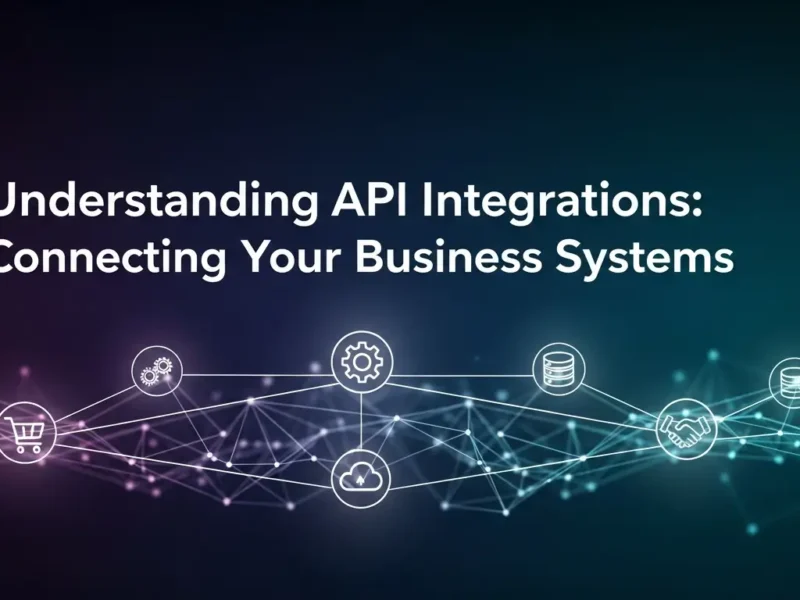In today’s fast-paced digital landscape, businesses are constantly seeking ways to innovate, scale, and optimize their operations. One increasingly popular strategy is offshore software development. This approach allows companies to tap into a global talent pool, reduce costs, and accelerate their development cycles. However, with a multitude of offshore software development companies vying for attention, choosing the right partner can feel like navigating a complex maze. This definitive guide will equip you with the knowledge and insights needed to make an informed decision, ensuring a successful and fruitful collaboration.
Why Consider Offshore Software Development?
Before diving into the selection process, it’s crucial to understand the compelling benefits that drive businesses towards offshore partnerships.
- Cost Efficiency: This is often the primary driver. Offshore companies typically offer competitive rates due to lower labor costs in their regions, significantly reducing development expenses without compromising quality.
- Access to Specialized Talent: The global talent pool is vast and diverse. Offshore partners can provide access to highly skilled developers with expertise in niche technologies or specific industry domains that might be scarce locally.
- Faster Time-to-Market: With a dedicated offshore team, companies can often accelerate their development timelines, bringing products and features to market quicker than with in-house resources alone.
- Scalability and Flexibility: Offshore teams can be scaled up or down as project requirements evolve, offering a flexible solution to meet fluctuating demands without the overhead of permanent hires.
- Focus on Core Business: Outsourcing software development allows your in-house team to concentrate on core business activities, innovation, and strategic initiatives.
Identifying Your Project Needs: The First Crucial Step
Before you even begin researching potential partners, a clear understanding of your own project requirements is paramount. This foundational step will significantly streamline your search and help you identify companies that are a genuine fit.
- Define Your Project Scope: What exactly do you need developed? Is it a mobile app, a web platform, enterprise software, or something else entirely? Detail the features, functionalities, and expected outcomes.
- Technology Stack Requirements: What programming languages, frameworks, databases, and other technologies are essential for your project? Ensure potential partners have expertise in your preferred stack.
- Budget Allocation: Establish a realistic budget range for your project. This will help filter out companies that are either too expensive or too cheap (which could be a red flag).
- Timeline and Deadlines: What are your project timelines and critical deadlines? Communicate these clearly to potential partners to ensure they can meet your expectations.
- Communication Preferences: How do you envision collaborating with your offshore team? Consider time zone differences, preferred communication tools, and reporting structures.
Key Factors to Evaluate When Choosing an Offshore Partner
Once you have a clear picture of your project needs, it’s time to assess potential offshore software development companies. Here are the critical factors to consider:
1. Technical Expertise and Experience
This is non-negotiable. The chosen company must possess the technical prowess required for your project.
- Relevant Portfolio: Scrutinize their portfolio for projects similar in scope and technology to yours. Look for successful case studies that demonstrate their capabilities.
- Developer Skillset: Inquire about their developers’ individual skills, certifications, and experience with specific technologies. Ask to see developer resumes if possible.
- Industry-Specific Knowledge: If your project is in a niche industry (e.g., FinTech, Healthcare), seek companies with prior experience in that domain.
- Quality Assurance (QA) Processes: A robust QA process is essential for delivering high-quality software. Understand their testing methodologies, tools, and bug resolution strategies.
2. Communication and Collaboration
Effective communication is the cornerstone of a successful offshore partnership.
- Language Proficiency: Ensure their team members have excellent English communication skills (or your preferred language) to prevent misunderstandings.
- Communication Tools and Channels: Discuss their preferred communication tools (Slack, Jira, Trello, etc.) and how they handle daily interactions, meetings, and progress updates.
- Project Management Methodologies: Understand their approach to project management (Agile, Scrum, Waterfall). Agile methodologies are often favored for their flexibility and iterative development.
- Time Zone Management: While time differences are inevitable, discuss how they mitigate their impact to ensure timely communication and progress.
3. Reputation and Reliability
A company’s reputation speaks volumes about its reliability and service quality.
- Client Testimonials and Reviews: Look for reviews on independent platforms like Clutch, GoodFirms, or Capterra. Pay attention to both positive and negative feedback.
- References: Request client references and actually contact them. Ask about their experience, project success, communication, and problem-solving abilities.
- Company Culture and Values: While harder to assess remotely, try to get a sense of their company culture. A positive and professional environment often translates to better work.
4. Security and Intellectual Property (IP) Protection
Protecting your sensitive data and intellectual property is paramount.
- Data Security Protocols: Inquire about their data security measures, including network security, data encryption, and access controls.
- Confidentiality Agreements (NDAs): Ensure they are willing to sign robust Non-Disclosure Agreements to protect your proprietary information.
- IP Ownership: Clearly define in the contract that you will retain full ownership of all intellectual property developed during the project.
5. Cost-Effectiveness and Pricing Models
While cost-effectiveness is a major benefit, it shouldn’t be the sole deciding factor.
- Transparent Pricing: Look for companies with transparent pricing models. Understand what is included in their rates and if there are any hidden costs.
- Pricing Models: Common models include fixed-price (for well-defined projects), time and material (for flexible projects), and dedicated team (for long-term collaborations). Choose the model that best suits your project.
- Value for Money: Evaluate the overall value they offer, considering their expertise, quality of work, and track record, not just the lowest price.
6. Scalability and Post-Development Support
Consider your long-term needs beyond the initial development phase.
- Scalability of Teams: Can they easily scale their team up or down if your project requirements change?
- Maintenance and Support: Do they offer post-development maintenance, bug fixing, and ongoing support services? This is crucial for the longevity of your software.
- Future Development: Are they capable of handling future enhancements, upgrades, or new feature development?
The Selection Process: A Step-by-Step Approach
- Shortlist Potential Candidates: Based on your research and the factors above, create a shortlist of 5-10 companies.
- Request for Proposal (RFP): Send a detailed RFP to your shortlisted companies, outlining your project requirements, expectations, and desired deliverables.
- Evaluate Proposals: Carefully review each proposal, comparing their technical approach, pricing, timelines, and communication strategies.
- Interviews and Technical Assessments: Conduct interviews with their project managers and key developers. Consider providing a small test task to assess their technical skills and problem-solving abilities.
- Reference Checks: Contact the provided client references to gather direct feedback.
- Contract Negotiation: Once you’ve chosen your ideal partner, meticulously review and negotiate the contract, ensuring all terms and conditions are clearly defined, especially regarding IP, payment schedules, and dispute resolution.
- Pilot Project (Optional but Recommended): For larger projects, consider starting with a small pilot project to assess their capabilities, communication, and overall fit before committing to the full scope.
Common Pitfalls to Avoid
- Choosing Solely Based on Price: The cheapest option is rarely the best. Prioritize quality, expertise, and reliability.
- Ignoring Communication Barriers: Poor communication can cripple a project. Prioritize companies with strong communication skills.
- Lack of Clear Requirements: Vague project requirements lead to scope creep and project delays.
- Insufficient Due Diligence: Don’t skip the research, reference checks, and technical assessments.
- Neglecting Legal Aspects: Ensure comprehensive contracts cover IP, confidentiality, and service level agreements.
Conclusion
Choosing the best offshore software development company is a strategic decision that can significantly impact your business’s success. By meticulously defining your project needs, thoroughly evaluating potential partners against key criteria, and following a structured selection process, you can forge a powerful and productive collaboration. Remember, this isn’t just about outsourcing tasks; it’s about building a trusted partnership that drives innovation and delivers exceptional software solutions. Invest the time and effort upfront, and you’ll reap the rewards of a successful offshore development journey.
Ready to find your ideal offshore software development partner? Take the first step by outlining your project needs and begin your search for a company that can transform your vision into reality.



